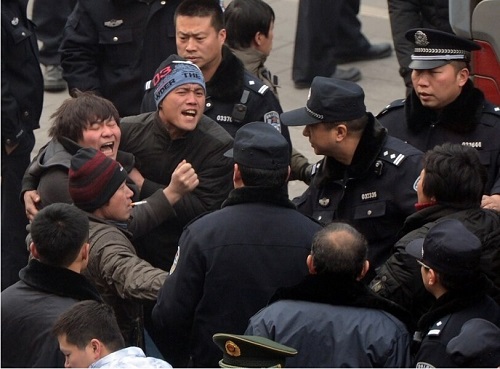Labor unrest in China has been on the rise in recent years, and China Labour Bulletin is now reporting that strikes in the third quarter of 2014 have doubled since the same quarter last year:
There were 165 incidents in September alone, and there is no indication that this upward trend is slowing down in October. One important reason for the increase in numbers is the greater visibility of strike action on social media in China; however there does seem to be an actual increase in strikes, most noticeably in the construction industry and in the inland regions of China.
The factories of Guangdong, which have been the traditional centre of worker activism in China, still play a key role in the workers’ movement but strike action is clearly spreading both geographically and across industrial sectors.
The manufacturing industry still accounts for a sizable proportion (45.2 percent) of all strike action but the biggest increase in worker protests this quarter was in the construction sector, up from just two percent (four out of 185 incidents) in the third quarter of 2013 to 14.8 percent (55 out of 372 incidents) in 2014. The well-documented slump in China’s property market is the main driving force behind the flood of protests. Developers are saddled with declining sales, weaker credit availability and continued pressure from local governments to buy land. In these situations, it is the construction workers who are always the last to be paid.
CLB’s strike map shows that the strikes are occurring throughout China, and workers are increasingly demanding unpaid social security payments. Social security became the focus of more worker actions following the Yue Yuen shoe factory strike in April 2014.
In the second quarter of this year, CLB reported a 49% increase in strikes over the previous year.








